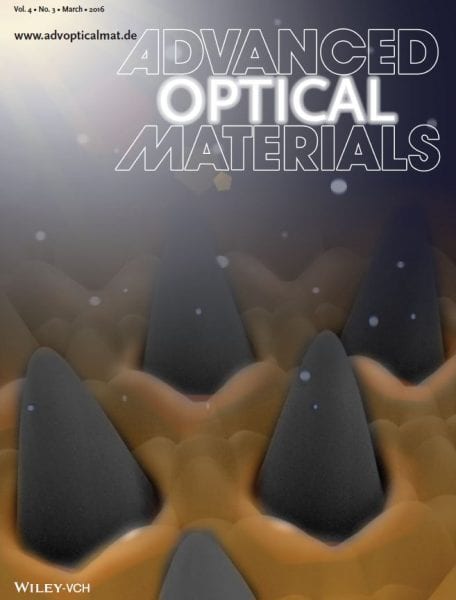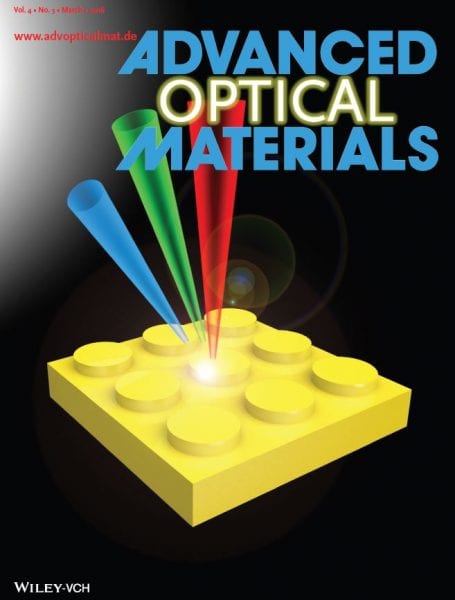The latest issue of Advanced Optical Materials is now available. You can sign up to access all Advanced Optical Materials articles right here!
These articles were highlighted on the covers of the Advanced Optical Materials March issue:
 FRET
FRET
Molecular photonic wires (MPWs) position dyes using DNA and utilize Förster resonance energy transfer (FRET) to direct photonic energy. However, available donor–acceptor dyes limit the size of current MPWs. In their work, which is highlighted on the front cover, I. L. Medintz and co-workers show that homoFRET between identical dyes can provide zero loss but with random directionality. HomoFRET is extended up to five steps in the schematic model constructs with only ≈50% energy transfer loss by accessing DNA modularity.
Light Harvesting
The inside cover depicts an analytically derived optimum solution to broadband plasmonic enhancement of solar harvesting: a nanoscale metal topography, capable of significantly improving the efficiency of solid state solar cells via excitation of surface plasmon polaritons. The structure presented by D. Zerulla and É. McClean-Ilten consists of a superposition of Bessel functions leading to high weighted absorption enhancements (>130%) and unprecedented improvements (>30%) of solar cell external quantum efficiencies over the entire harvestable range.
Narrowband Absorbers 
Spatially and spectrally resolved narrowband optical absorbers are presented by Q. Li and co-workers on the back cover. The devices are based on 2D grating nanostructures with spatially and spectrally resolved narrow-band absorption. The transverse magnetic lattice mode supports both large wavelength-angle sensitivity and large absorption-angle sensitivity. The absorbers can be applied in devices for spatial optical measurement techniques with significantly reduced size and weight.

















